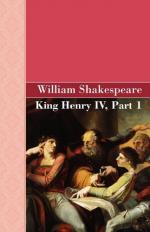|
This section contains 8,822 words (approx. 30 pages at 300 words per page) |

|
SOURCE: Council, Norman. “Prince Hal: Mirror of Success.” Shakespeare Studies 7 (1974): 125-46.
In the following essay, Council examines how Prince Hal, Falstaff, and Hotspur each respond to the code of honor documented in various Renaissance texts. The critic asserts that while Hotspur rigidly adheres to the code and Falstaff flatly rejects it, Hal remains aloof from its requirements but manipulates and exploits it to achieve political success.
The idea that Shakespeare arranges the three principals of 1 Henry IV in a quasi-Aristotelian paradigm of the theme of honor has been so often iterated and has so dominated the teaching of the play that it has become a virtual truism. Hotspur, the argument goes, represents the excess, Falstaff the defect, and Hal the virtuous mean of the honorable man.1 This has been an appealing idea, I suspect, partly because it is a convenient scheme and partly because if it were valid...
|
This section contains 8,822 words (approx. 30 pages at 300 words per page) |

|


